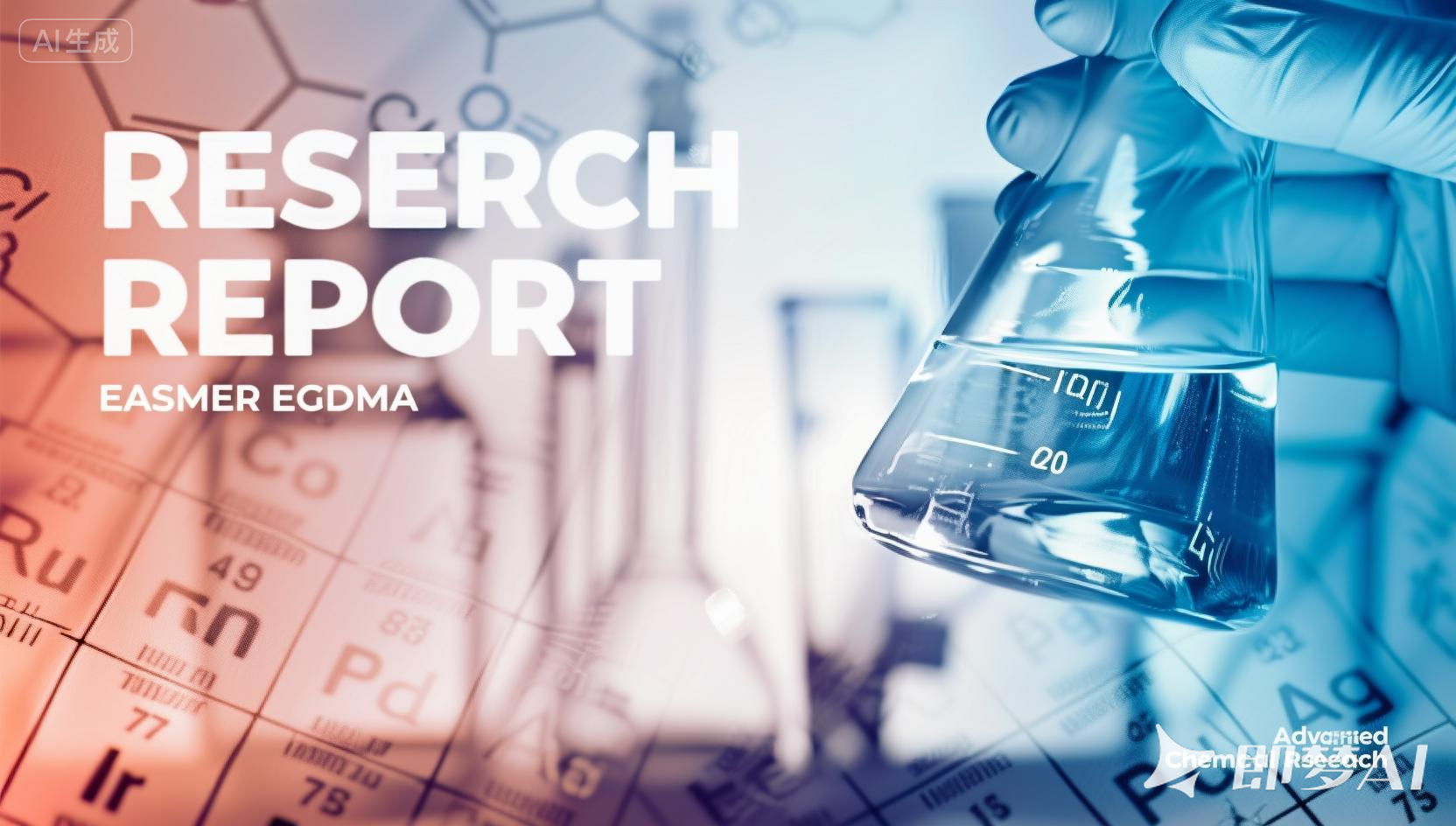Easmer EGDMA (Ethylene Glycol Dimethacrylate, CAS 97-90-5) Research Briefing
Release time:
2025-08-17
This is a concise, sourced research briefing on Ethylene Glycol Dimethacrylate (EGDMA, CAS 97-90-5), focusing on its structure-property relationship and the advantages of this "special" structure in practical applications.
1. Product Information
Identity: EGDMA is the dimethacrylate ester of ethylene glycol (C10H14O4).
It is a low-viscosity, colorless liquid, commonly used as a bifunctional cross-linking agent in free radical (photo)polymerization.
Typical Physical Data: Density is about 1.05 g/mL. The boiling point is approximately 98–100 °C at 5 mmHg pressure. The flash point is about 101 °C.
Regulatory & Safety Highlights: According to REACH/CLP notifications, EGDMA is classified as a skin sensitizer (H317) and is harmful to aquatic life (H412).
Gloves and eye protection should be worn during use, and residual monomer in cured products should be minimized.
2. Chemical Structure and Key Characteristics
Structure: Two methacrylate vinyl groups are linked by a short –O–CH2–CH2–O– spacer.
CH2=C(CH3)–C(=O)–O–CH2–CH2–O–C(=O)–C(CH3)=CH2
Impact on Network Structure
High Cross-linking Density at Low Addition Levels: The short spacer keeps the reactive groups close, allowing EGDMA to quickly reach the gel point and form a hard, glassy network, especially in MMA/PMMA systems.
Low Viscosity, Fast Curing: As a low molecular weight diacrylate, EGDMA can reduce the viscosity of a mixture and increase the double bond conversion rate under UV/thermal initiation.
Trade-off: Compared to longer PEG-DMA analogs, short-spacer cross-linkers can increase modulus/hardness but may also increase brittleness and polymerization shrinkage stress.
3. Structural Advantages in Applications
Dimensional Stability & Solvent Resistance: The dense EGDMA cross-linking inhibits swelling/creep, which is crucial for hydrogels, adsorbents, and coatings.
Template Fidelity in MIPs: EGDMA is a primary cross-linker for molecularly imprinted polymers (MIPs). Its rigidity can "fix" the recognition sites and improve selectivity.
Mechanical Reinforcement of Acrylic Matrixes: In PMMA-based bone cements and dental resins, a small addition of EGDMA can improve strength and conversion while maintaining a workable curing profile (optimal loading at low to medium weight percentages).
Photocuring Formulations: In UV/DLP/SLA systems, EGDMA helps balance low viscosity and high cross-linking density, making it suitable for denture bases, teeth, and other 3D printed parts.
4. Key Application Analysis
A) Traditional Industries: Core Modifiers for Plastics and Rubber
PVC Toughening: In the synthesis of acrylate core-shell impact modifiers (ACR), EGDMA acts as a shell cross-linker. Its content directly affects the cross-linking density and grafting efficiency of the ACR. An appropriate amount of EGDMA can form an effective cross-linked network, which helps to disperse stress in the PVC matrix, significantly enhancing the impact strength of PVC and achieving a transition from brittle to tough material.
Rubber Vulcanization: In peroxide curing systems, EGDMA is often used as a co-agent. It can synergize with peroxides to increase the efficiency and speed of the cross-linking reaction. Especially for saturated elastomers that are difficult to cure with traditional sulfur systems, the addition of EGDMA can significantly improve their thermal stability and ozone resistance.
B) Biomedical Acrylic Resins (Bone Cements; Dentures/Dental)
PMMA Bone Cement: Studies show that adding EGDMA (usually at low weight/volume percentages) can improve flexural strength and modulus. Excessive addition leads to over-cross-linking and reduced performance, so a clear optimal window exists. Kinetic studies also show that EGDMA can shorten the setting time and increase polymerization exotherm. Formulation control is crucial for managing heat/shrinkage.
3D Printed Denture Bases and Teeth: A DLP/SLA patent for dental prostheses lists EGDMA as one of the preferred multifunctional (meth)acrylates to achieve low viscosity, controlled shrinkage, and strong, biocompatible parts, along with urethane dimethacrylates and Bis-DMA/Bis-GMA.
Dental Composites/Adhesives: While TEGDMA/UDMA/Bis-GMA are dominant, EGDMA is also used as a cross-linking diluent in certain acrylic and denture base systems to tune hardness and solvent resistance. Shrinkage stress and sensitization risk need to be considered.
C) General UV/EB/Thermal Cured Coatings, Inks & 3D Printing Resins
As a low-viscosity diluent-cross-linker, EGDMA can improve hardness, chemical resistance, and curing speed in acrylate formulations. Consider blending with longer-chain dimethacrylates (e.g., TEGDMA/PEGDMA) or urethane acrylates to balance toughness with brittleness.
D) Cutting-Edge Scientific Applications
Hydrogels & Drug Delivery: EGDMA-cross-linked classic HEMA or MAA-based hydrogels allow for precise control of mesh size, swelling ratio, and release kinetics. Increasing EGDMA reduces swelling and slows diffusion, which is useful for sustained-release and mechanically robust gels.
Molecularly Imprinted Polymers (MIPs) & Sensors: EGDMA is consistently cited as the most common cross-linker for MIPs used in separation and electrochemical sensing because it produces a rigid, porous network with fixed binding cavities. Recent research combines EGDMA-MIPs with nanoparticles for faster mass transfer and higher capacity.
Chromatography and Ion Exchange Media: Highly cross-linked poly(GMA-co-EGDMA) and related methacrylate beads/monoliths are widely used as stationary phases (RP, HILIC, affinity) and, after post-functionalization (e.g., amination of GMA epoxide), as ion exchange resins. EGDMA determines the bead's rigidity, porosity, and pressure resistance, which are critical for HPLC performance.
5. Practical Formulation Notes (Structure-Processing-Performance Tips)
Start Low: In MMA/PMMA matrices, performance often peaks at low to medium EGDMA content. Excessive amounts can lead to embrittlement and increased shrinkage/exotherm.
Viscosity Modification: EGDMA can effectively dilute Bis-GMA/UDMA systems while maintaining cross-linking density, which is very useful in printable resins.
Improve Toughness by Substitution: If fracture is a concern, substitute a portion of EGDMA with a long-spacer (PEGDMA) to improve impact resistance.
Health & Safety: Control residual monomer by curing to high conversion. Due to its sensitizing nature, ventilation, skin protection, and good industrial hygiene practices should be employed.
If you need to obtain the product technical data (TDS/MSDS) or samples, please contact: sales@eastomat.com.We will provide you with professional formulation suggestions and technical support.
EGDMA
Latest News
Get a Free Consultancy
NANTONG EASTO MATERIALS TECHNOLOGY CO.,LTD.

No.118,Zhujiang Rd.,Juegang St.,Rudong County,
Nantong City,Jiangsu Province,226400,China




 2025-08-17
2025-08-17







